- Crazy Pablo
- Posts
- Guerrilla Girls Strike Again
Guerrilla Girls Strike Again
I was at Tate Modern this week, and this poster jumped out at me. It reminded me of something bigger than art: we need more women in decision-making roles—everywhere.
First time reading? Sign up here.
Nude Figure Reclined on the Couch (marked red)
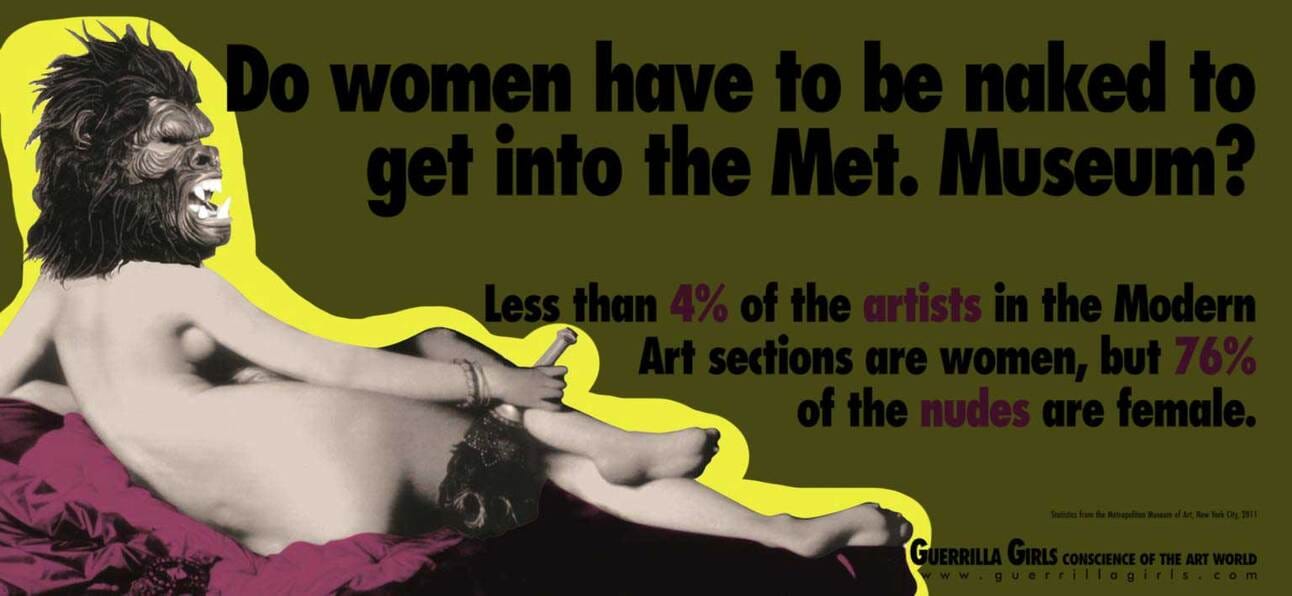
She’s lifted from Ingres’ La Grande Odalisque (1814), but here she’s wearing a gorilla mask. She is both the ideal and the protest. The Guerrilla Girls hijack the symbol of Western art's obsession with the female nude and give her back a voice through absurdity.
Text Box With Stats (marked blue)
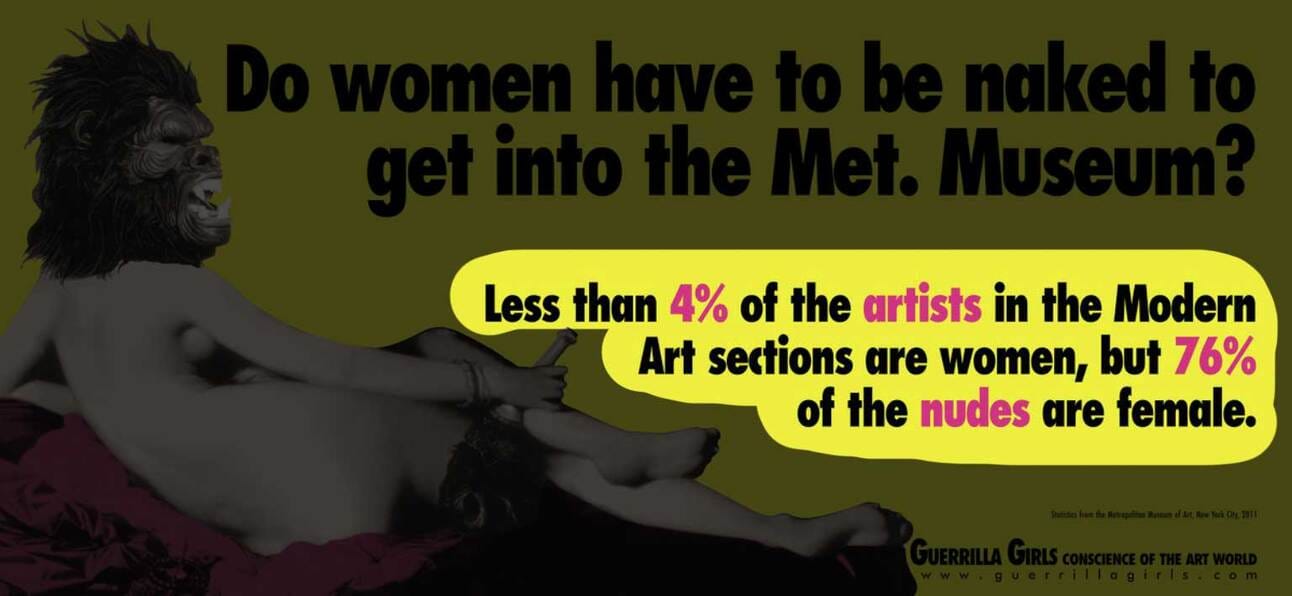
"Less than 4% of the artists in the Modern Art sections are women, but 76% of the nudes are female." The facts are uncomfortable. Their design is clear: get your attention. No frills, just injustice.
Punk Origins (marked green)
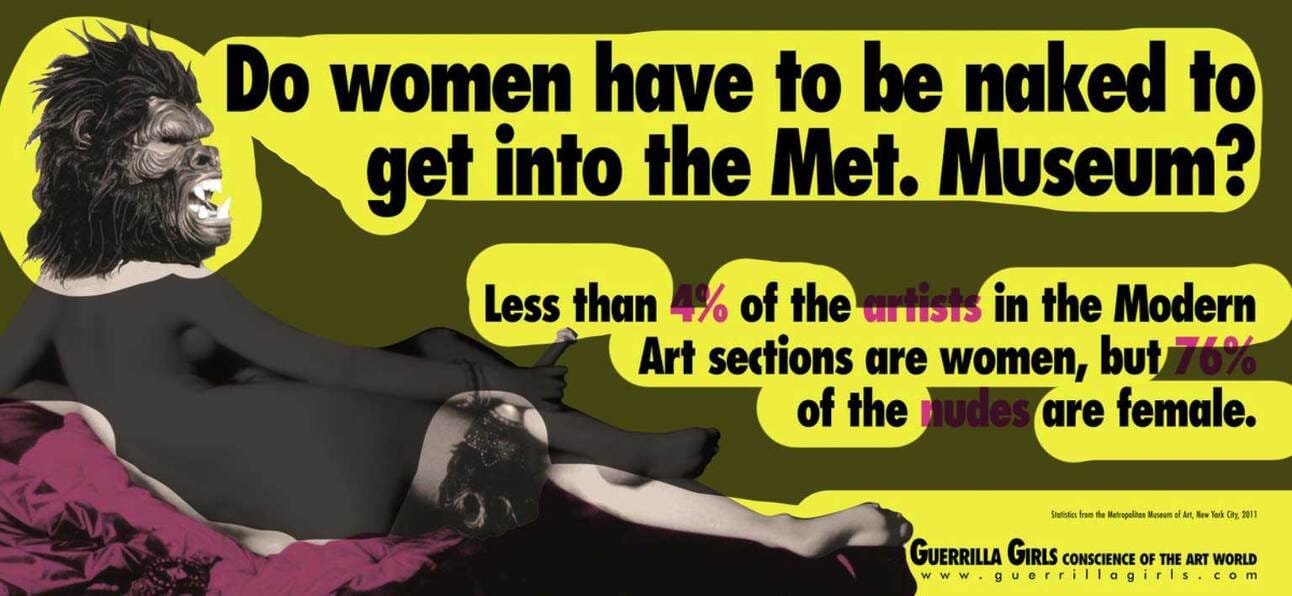
Black ties the piece to its punk origins - flyposting, anonymity, nighttime interventions. It’s the color of protest here, but also of the archive: bold, printed, undeniable.
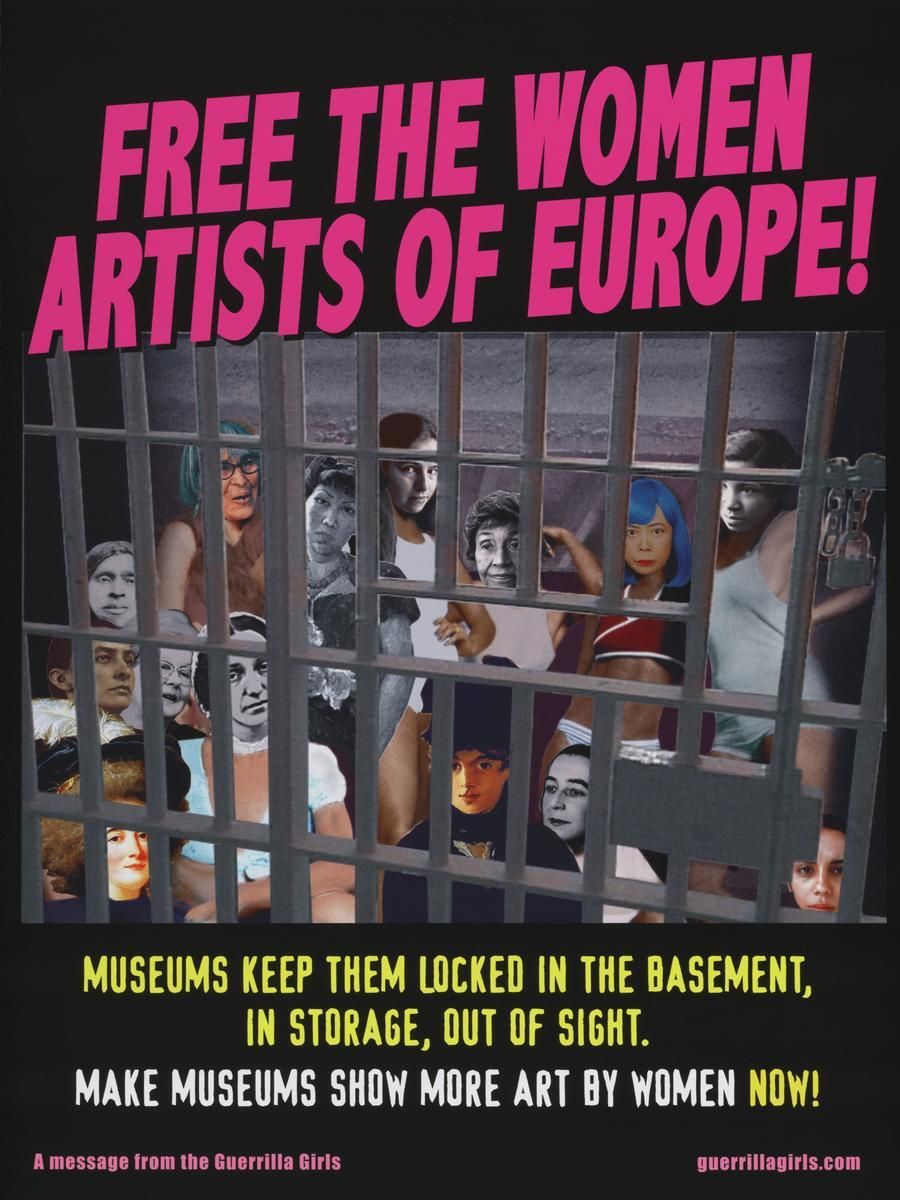 | Fun FactThis poster at Tate Modern still hits like a punch, nearly four decades after the first version was wheat-pasted in SoHo: "Do women have to be naked to get into the Met. Museum?" The Guerrilla Girls asked it in 1985, and again in 2012—because sometimes, nothing changes. The Update version of the original 1985 poster was part of the Guerrilla Girls' Portfolio Compleat Update (1991–2012). It came with books, stickers, and even a plastic shopping bag critiquing environmental policy. The Guerrilla Girls don’t just make art; they make activist kits. And unlike the dusty archives they critique, these are meant to move. The Guerrilla Girls have been fighting sexism and racism in art since 1985, always in gorilla masks, always anonymously. Each member adopts the name of a dead woman artist (like Frida Kahlo or Käthe Kollwitz) and together they operate like an activist superhero squad armed with stats, wit, and a lot of glue sticks. |
Think About It 🤔
The Guerrilla Girls don’t just ask who’s missing from the museum walls—they ask who built the walls to begin with. One of them once said: “This isn’t the history of art. It’s the history of power—white, Western, male power.”
That goes far beyond museums. The data that shapes our world—from census records and education stats to immigration policy and criminal justice algorithms—is built on decades (if not centuries) of Western categorization. These state-run archives weren’t designed to reflect diversity—they were designed to manage, sort, and control. And even today, digital tools, search engines, and AI systems still rely on those same biased foundations.
How does it relate to the here and now? or What to say during casual conversation to show off your art knowledge?
Representation Isn’t Retro - “This Guerrilla Girls poster made me think about how much has—and hasn’t—changed. The numbers are still off, even in 2025. Whether it’s gallery rosters or Netflix directors, the question isn’t just where are the women? but who gets to decide what matters?”
What You Feed the Machine Matters - “This Guerrilla Girls piece made me think about how today’s information systems—search engines, databases, even AI—are all built on archives created by Western institutions. If the source material is already biased, then the tech just recycles the same blind spots. our digital tools aren’t neutral—they’re trained on past priorities. If your archives are built on exclusion, your algorithms will be too.”
Now have another Look!
And If You’re Up for More…
See Ingres’s La Grande Odalisque at the Louvre in Paris. The reclining nude at the heart of the Guerrilla Girls’ poster hangs in one of the most visited museums in the world.
Art doesn’t just reflect culture—it shapes it. Whose image do we keep seeing? Whose do we still overlook? Let me know what you think. Just hit reply.
Till next time,
Inbal Z M

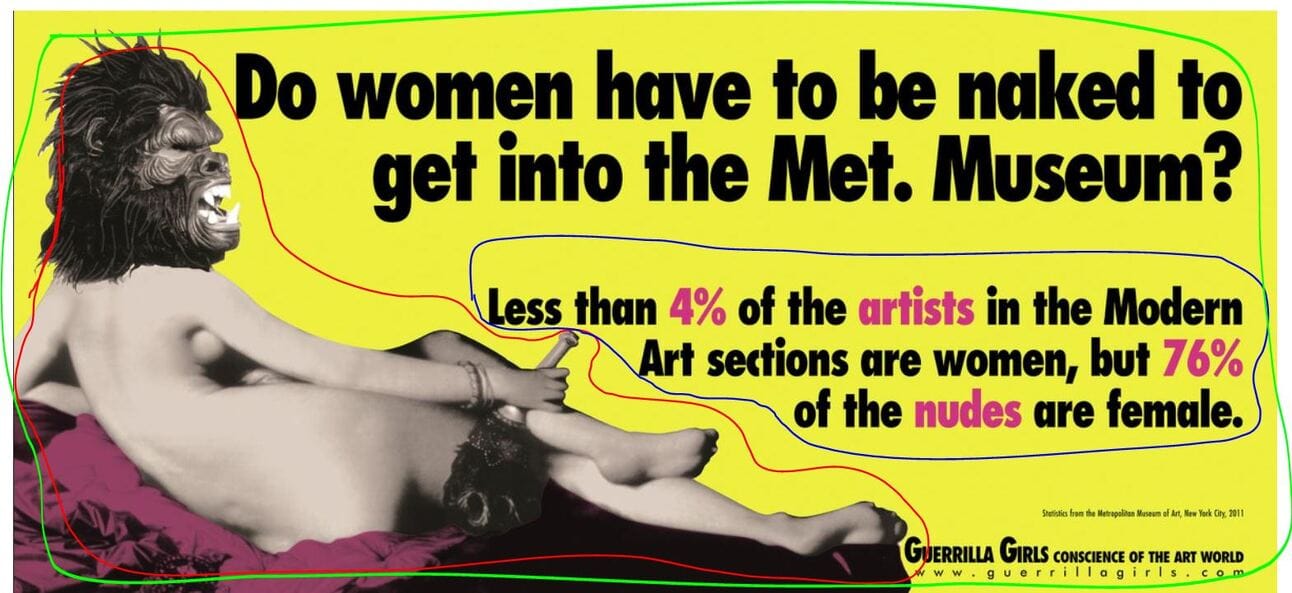
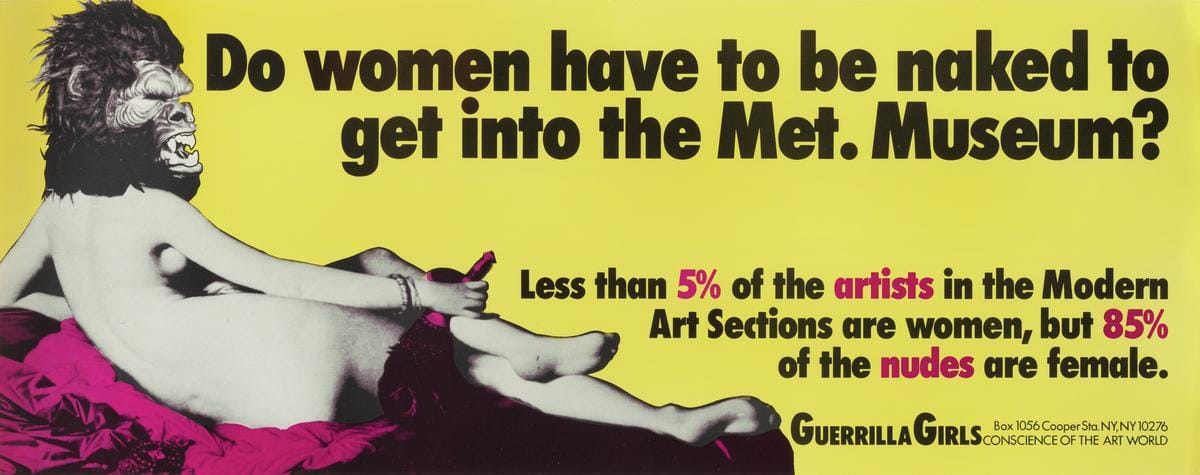
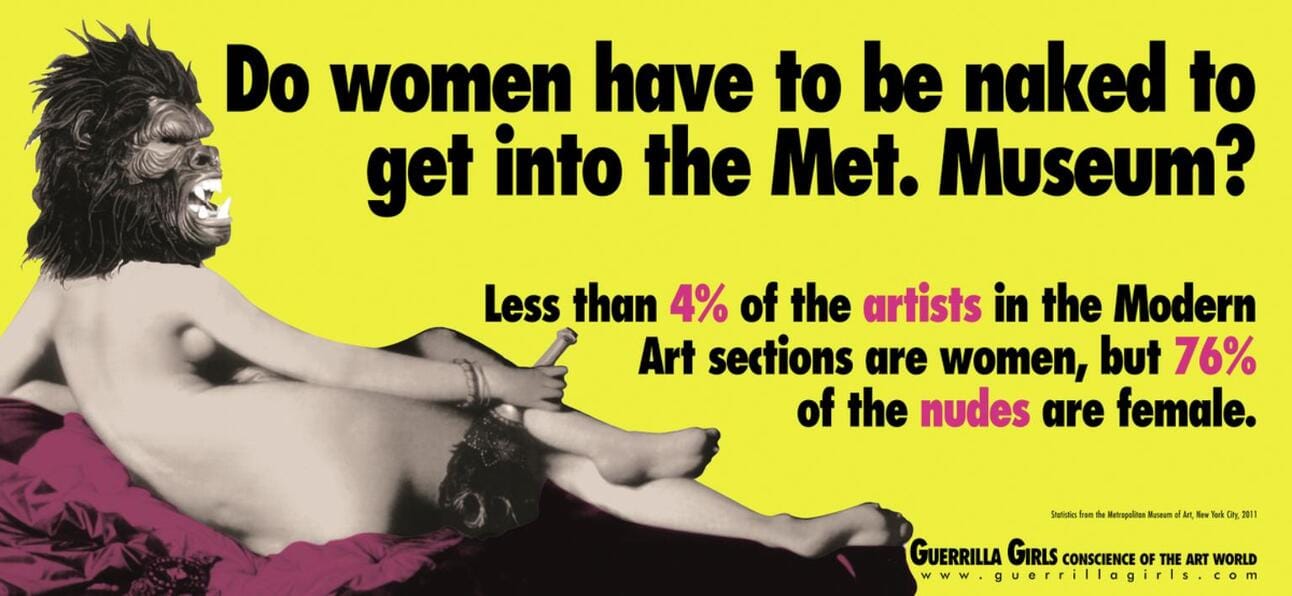
Reply